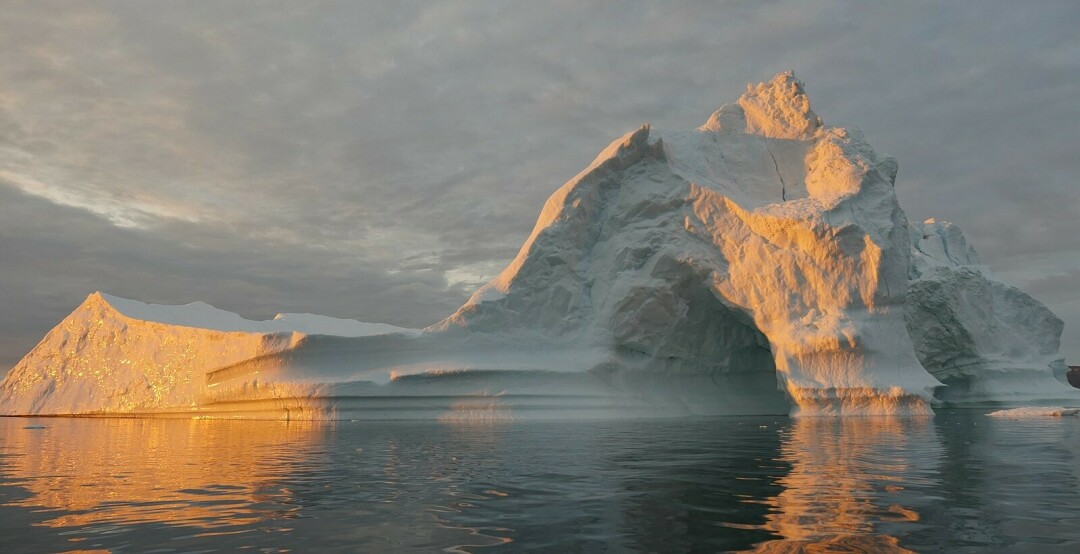News & Articles
Browse all content by date.

An iceberg floats in Disko Bay, near Ilulissat, Greenland. The massive Greenland ice sheet is shedding about 300 gigatons (a gigaton is a billion metric tons) of ice a year into the ocean, making it the single largest source of sea level rise from melting ice. NASA photo.
It was June 23, 1988. A little more than 36 years ago, James Hansen, director of NASA’s Goddard Institute for Space Studies, testified at a congressional hearing where he informed the audience that global warming was directly linked to human activity.
In his book Losing Earth: A Recent History, Nathaniel Rich quoted Hansen stating that the warming trend could be detected with 99% confidence and that “the evidence is pretty strong that the greenhouse effect is here.”
And then 19 years later, as documented in James Gustave Speth’s The Bridge at the Edge of the World, Hansen wrote in a 2007 climate assessment, “This warming has brought us to the precipice of a great tipping point. If we go over the edge, it will be a transition to a different planet, an environment far outside the range that has been experienced by humanity.”
Speth also presents an overview of the significant impact that humans have had on the natural earth. Half of the world’s tropical and temperate forests are gone. Half of the wetlands and a third of the mangroves are gone. Species are disappearing a thousand times faster than normal.
By just looking at the most recent climate events taking place around the world, we have to wonder how close we’re getting to the edge, and begin to think about when we may go over that edge.
Bill McKibben argues that we are already living in a new world. Throughout his book eaarth: Making A Life On A Tough New Planet, McKibben talks about the ongoing rise in CO2, that the sea is 30% more acidic than it would have been because of our emissions, there’s been a significant increase in the annual number of hurricanes in the tropical Atlantic and that drought is becoming a permanent condition in the American Southwest.
“We’re every day less the oasis and more the desert. The world hasn’t ended, but the world as we know it has - even if we don’t quite know it yet. We imagine we still live back on that old planet, that the disturbances we see around us are the old random and freakish kind. But they’re not. It’s a different place,” stated McKibben.
Right now, the east coast of the U.S. is experiencing a historic heat wave – 100 degrees in Newark, New Jersey; 104 degrees in Philadelphia, Pennsylvania; 106 degrees in Washington, D.C.
While writing The End Of Ice: Bearing Witness And Finding Meaning In The Path Of Climate Disruption,
Dahr Jamail interviewed Dr. Harold Wanless, a professor and chair of the Department of Geological Science at the University of Miami. During their meeting to discuss the thermal expansion of the oceans and the rise in the sea level, Wanless stated, “We’ve screwed ourselves. We kicked the bucket. We have gone off the cliff.”
Wanless’ studies show that 93.4% of the global warming heat that humanity has produced is in the oceans, and half of that went into the oceans since 1997.
Jamail writes about the dramatic changes taking place to glaciers and coral reefs. The glaciers in Montana’s Glacier National Park lost more than 30% of their area between 1966 and 2015. Glaciers in Canada’s British Columbia and Alberta are projected to shrink by a minimum of 70% by 2100.
And if immediate action is not taken, 90% of all reefs will be threatened by 2030, and all the planet’s coral reefs could be gone by 2050.
Many cities across the U.S. and around the world are facing a variety of climate challenges, from rising sea levels to higher temperatures. And they are all moving closer to the edge while trying to figure out how to create more sustainable and resilient foundations for their futures.
Here in Duluth, we have many “tipping points” that have definitely put our city on the edge.
We have a newly elected mayor who refuses to discuss climate change or make it a priority in his first administration.
We have a local congressman who supports a former president – now running for reelection – who supports fossil fuel development and took the U.S. out of the Paris Agreement.
And we have a number of city council members who appear more interested in the political game of winning elections than seriously addressing climate change with their constituents.
And besides the lack of leadership in our local government, we see many of the corporations and unions staying fairly quiet when it comes to any public discussions or conversations about climate change and its future impacts upon the city.
So, how do we keep our city from being on or going over the edge? Where do we begin?
The mental health community needs to address the growing percentage of young people experiencing climate anxiety and depression. The school system needs to provide more climate information and education.
The local hospitals and health care systems need to offer more public health education and outreach addressing various health concerns; especially among our most vulnerable populations.
Also, the citizens of this city need to organize a climate commission or task force where there can be an open dialogue about the climate emergency which the city council declared in 2021.
Naomi Klein, in her book This Changes Everything: Capitalism vs The Climate, argues that the changes we need to see will not come from the top and that we must move away from corporations and large institutions, and move toward communities.
“No matter how many times we have been disappointed by the failings of our politicians, this realization still comes as a blow. It really is the case that we are on our own and any credible source of hope in this crisis will have to come from below,” stated Klein.
| Tweet |


